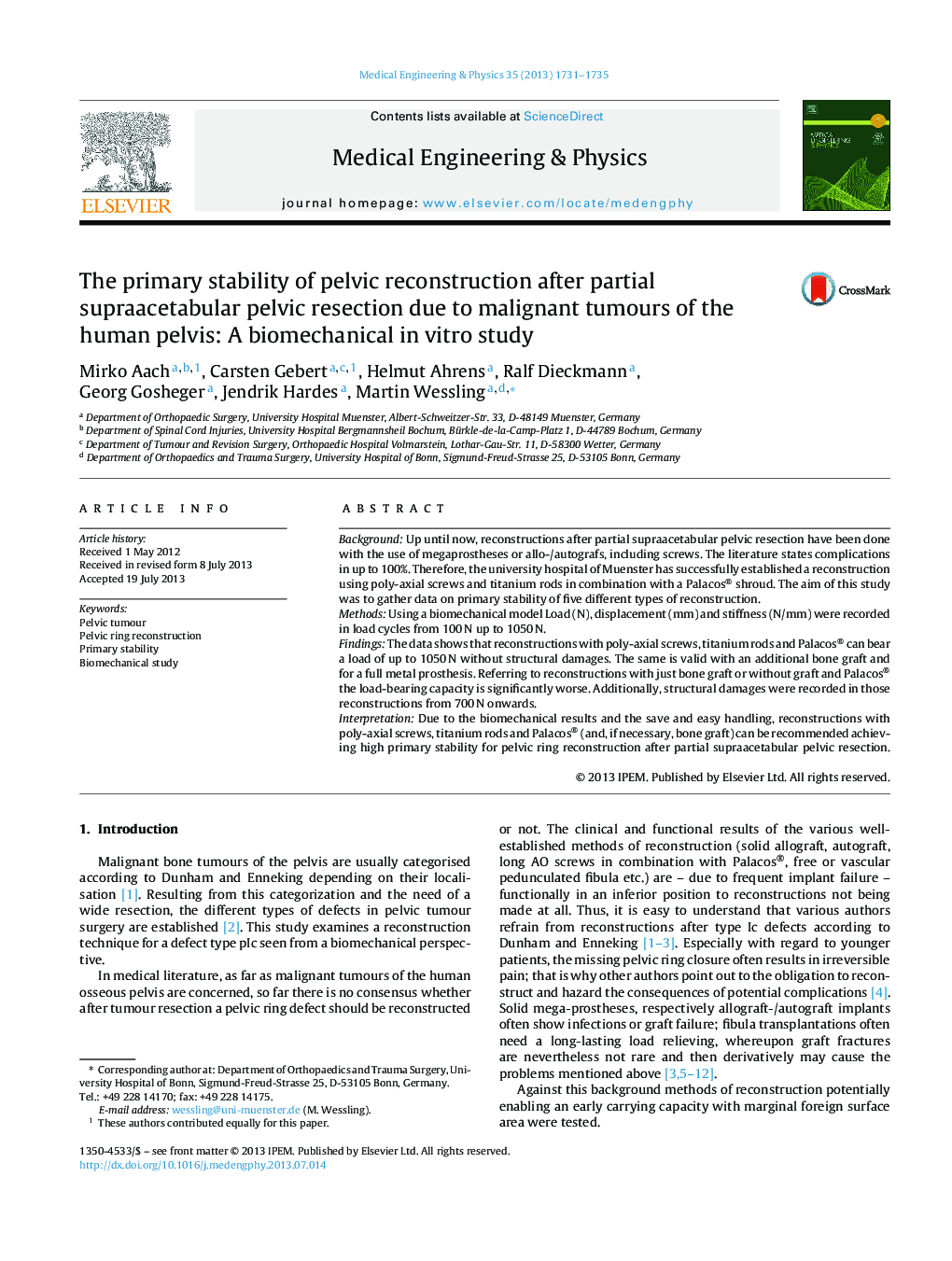| Article ID | Journal | Published Year | Pages | File Type |
|---|---|---|---|---|
| 876087 | Medical Engineering & Physics | 2013 | 5 Pages |
BackgroundUp until now, reconstructions after partial supraacetabular pelvic resection have been done with the use of megaprostheses or allo-/autografs, including screws. The literature states complications in up to 100%. Therefore, the university hospital of Muenster has successfully established a reconstruction using poly-axial screws and titanium rods in combination with a Palacos® shroud. The aim of this study was to gather data on primary stability of five different types of reconstruction.MethodsUsing a biomechanical model Load (N), displacement (mm) and stiffness (N/mm) were recorded in load cycles from 100 N up to 1050 N.FindingsThe data shows that reconstructions with poly-axial screws, titanium rods and Palacos® can bear a load of up to 1050 N without structural damages. The same is valid with an additional bone graft and for a full metal prosthesis. Referring to reconstructions with just bone graft or without graft and Palacos® the load-bearing capacity is significantly worse. Additionally, structural damages were recorded in those reconstructions from 700 N onwards.InterpretationDue to the biomechanical results and the save and easy handling, reconstructions with poly-axial screws, titanium rods and Palacos® (and, if necessary, bone graft) can be recommended achieving high primary stability for pelvic ring reconstruction after partial supraacetabular pelvic resection.
